Many of us grew up learning to sew from companies such as Butterick, McCall’s, Simplicity, and Vogue, and in this post, A Guide to Collecting Vintage Sewing Patterns, we will delve into the world of vintage sewing patterns.

If you aren’t a keen crafter, you may be wondering why do people even collect vintage sewing patterns? For starters, even though the patterns may be showing their age, they can usually still be used to produce clothing from dresses, to pants, to skirts, to jackets. Some vintage sewing pattern collectors, simply purchase them with the intent to create the garment. Others enjoy the visual appeal, often their bright covers displaying what the finished product should look like. While many items people collect to try and make money on due to their vintage value, unfortunately, due to the low cost of vintage sewing patterns, they are generally not worth collecting if you are hoping to profit from your collection. The most expensive sewing patterns generally only sell for $350.00 USD, while the majority of patterns are only valued at a mere few dollars each.
Contents
The History of Paper Sewing Patterns
While in modern-day, sewing patterns are often downloadable files online, many years ago before technology such as computers existed in each household, primarily women would head to the local crafting store where they could purchase paper sewing patterns. Often the patterns were printed onto thin paper meaning that getting your hands on an original vintage pattern may be somewhat hard. Many of the original vintage patterns are however available as downloads today, meaning those that had their eyes set on a hand-crafted knit from the 1800s may still be able to create their very own today.
The 1800’s
Paper sewing patterns were first manufactured in the middle of the 1800s. These first were designed by Ellen Curtis Demorest and in 1860, these patterns were sold through her magazine, Mme. Demorest’s Mirror of Fashion (shown below).
In 1863, American tailor Ebenezer Butterick was the first to create a sewing pattern in multiple sizes. In fact, it was his idea to use tissue paper for the mass production of sewing patterns. Butterick’s company was also the first to introduce an enlarged and detailed instruction sheet, which they called a “Deltor.”
The earliest paper sewing patterns were pre-cut on plain tissue, with notches and holes for markings which aided in the construction of the garment. The printed pattern was introduced in the 1920’s, but did not become commonplace until just after World War II.
Companies still making paper patterns today
As mentioned in the introduction, there are four major pattern companies still making sewing patterns today. They are Butterick, McCall’s, Simplicity and Vogue. These four are also the most commonly found vintage patterns, though dozens of smaller companies made wonderful patterns throughout the years. I’ll show you a few here.
A Visual Guide through the Decades
1920’s
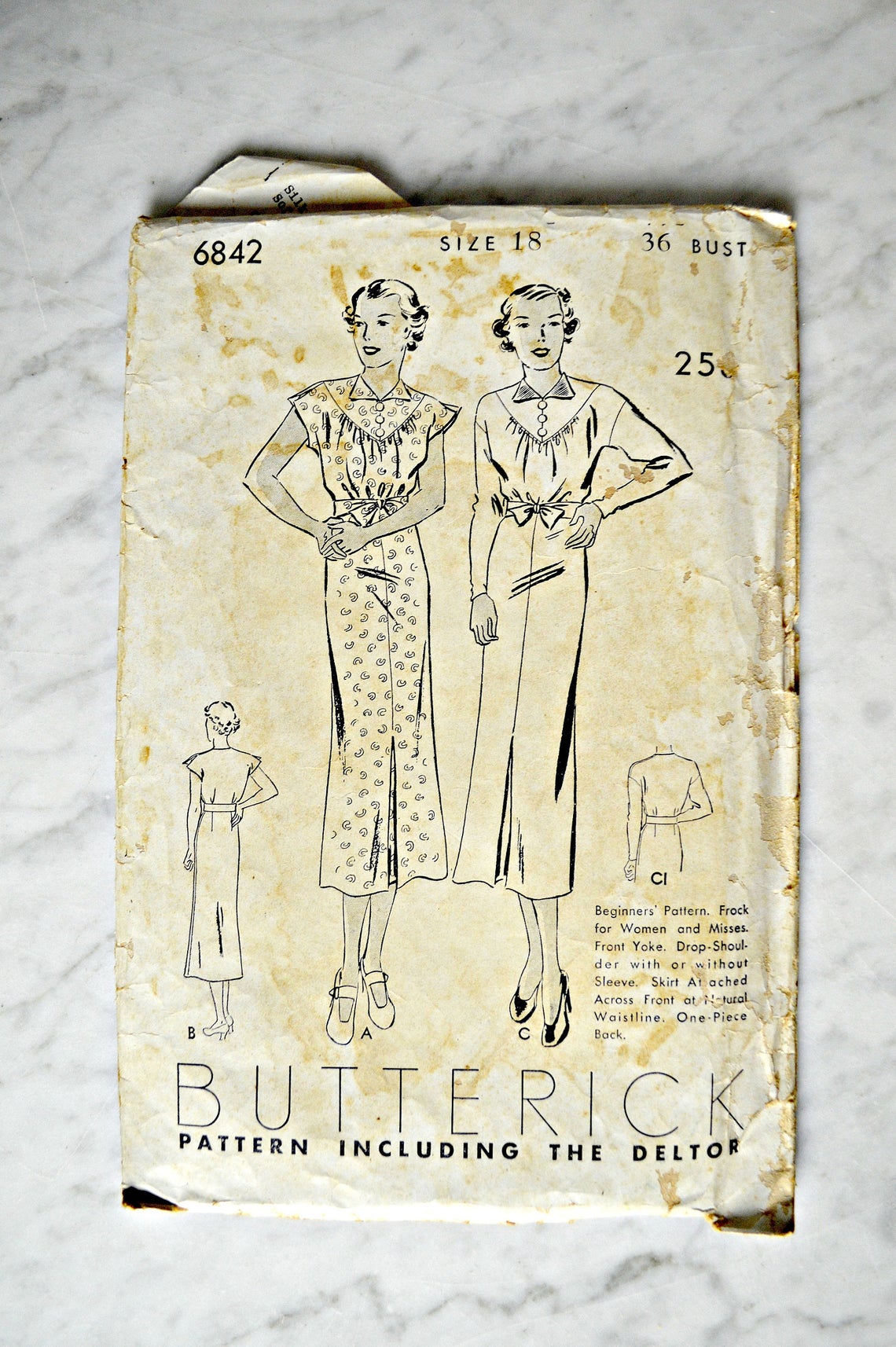
1930’s
1940’s
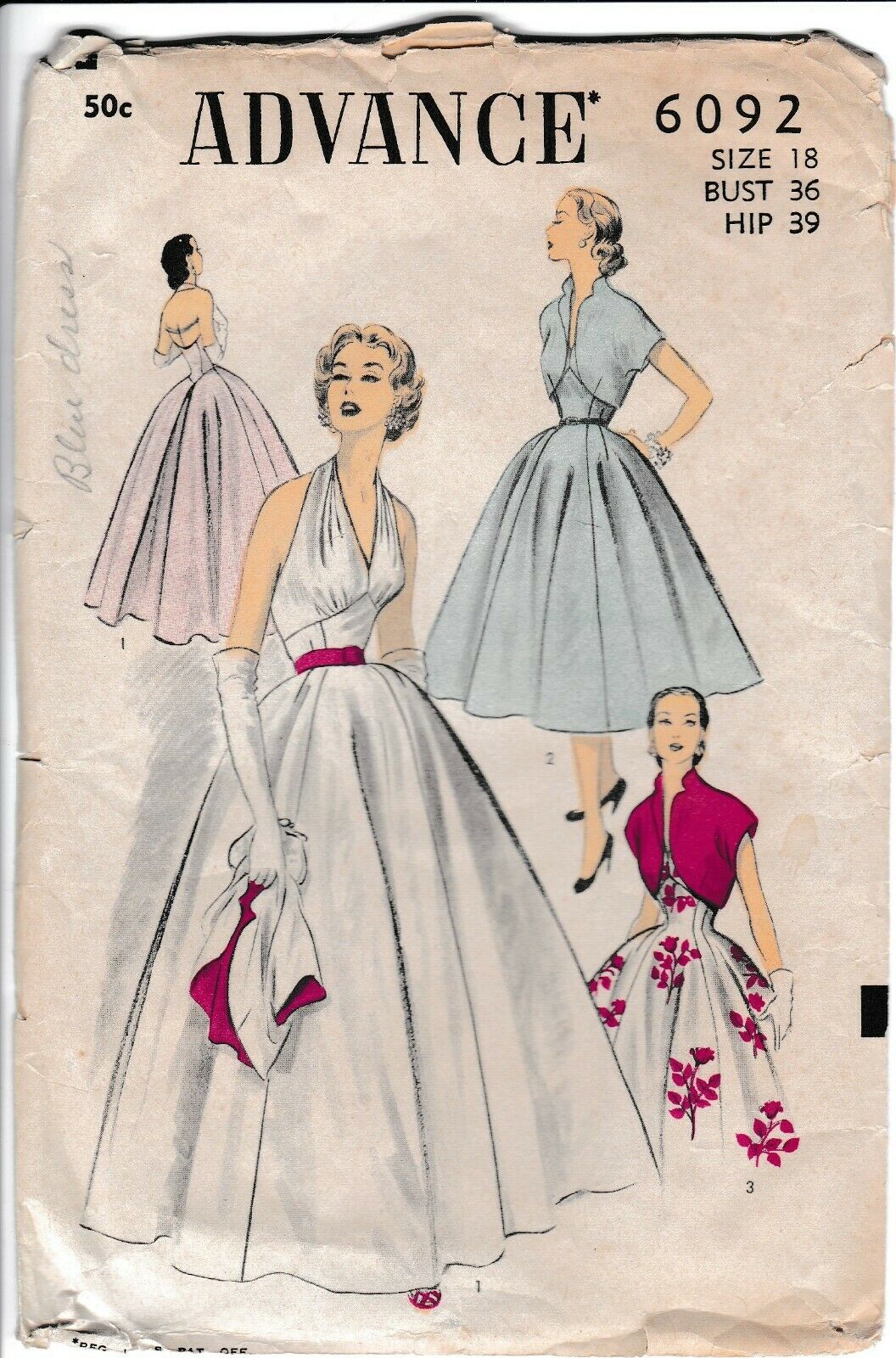
1950’s
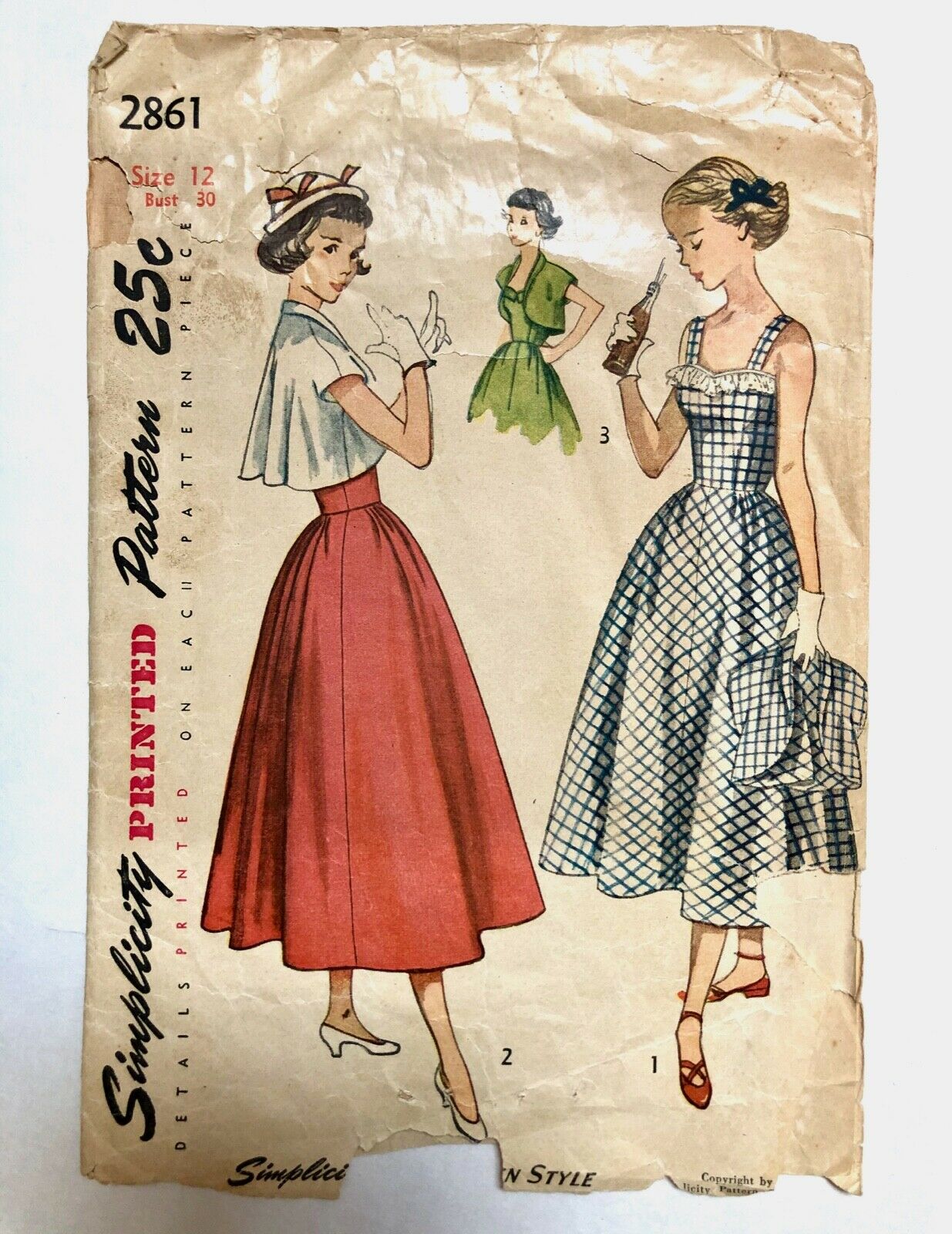
1960’s

1970’s to present
What to Look for in a Vintage Sewing Pattern
Collector’s come in every form. Some collect for value, some for the era (such as the 60’s), some collect for sentimental reasons, and others may be designers wanting to try their hand at the earliest of sewing pattern making.
Some collectors love the Hollywood brand. Their envelopes featured Hollywood starlets in the 1930s and 40s. Some of these patterns are loosely based on designs from the movies. Others were meant to reflect the style of the star pictured. Still, others had nothing to do with the starlet pictured, as in one that has Bette Davis on an apron pattern.
When purchasing a hard copy, vintage pattern, ensure all the pages as included and intact enough that you will be able to follow the pattern accurately.
Pattern Magazines and Counter Books
Pattern magazines and counter books (remember the big books in stores which showed all of the available patterns) are also fun to collect. They are also an invaluable resource for helping to date specific styles or patterns. Here’s just one example found on eBay.
Judging Condition of Vintage Sewing Pattterns
Questions to ask when buying vintage sewing patterns include:
Are all pieces present?
An experienced sewer may not mind a missing piece or two, but most of us require all of them to be able to complete the item. Also, be sure the instructions are in the envelope and that you have the portion of the envelope that would give you such information as to how much fabric to buy.
It’s rare to find vintage patterns in pristine condition, but sometimes you can find unused ones that still have the original “factory folds” and there’s no guesswork here that the pattern is complete.
If a pattern design is rare or particularly unusual, conditions may not play as big a role. That being said, the condition does affect value so be sure you are paying for what you are getting. If it’s a pattern mass-produced by a factory and the one you find isn’t in great condition, don’t worry. Another will likely come along!
Dating Vintage Sewing Patterns
The first thing to look for is a manufacturer’s date on the envelope or maybe even on the instruction sheet itself. McCall always dated their patterns, for instance, whereas Simplicity stopped dating theirs in the 1950s but resumed in the 1960s using the back of the envelope. Vogue rarely dated their patterns and Butterick never did.
If you simply cannot locate a date, you could also research the number of the pattern. Blueprints of Fashion, a book series by Wade Laboissonniere attempted to document them.
Sometimes the only determining age factor is that of the design itself or the model wearing it. Sometimes it takes some research to attempt to date a vintage sewing pattern.
A Word about Using Vintage Patterns
Most people buy for the sake of collecting, but if you intend to use them to make the clothing, the tissue is likely to be very fragile due to age. You might opt to make a copy of the pattern instead of using cut-out pieces to preserve its integrity. If you do not intend to use the pattern, and you purchased it purely for its vintage feel, laminating it is also an idea to keep it in pristine condition, although note this may decrease the resale value.
Finding Vintage Sewing Patterns
I had so much fun researching this post and I found sources for vintage sewing patterns in so many places: yard sales, garage sales, flea markets, Goodwill, eBay, Etsy, antique sales, auctions, online collectors; you name it!
eBay is a great resource with a vintage pattern category, but don’t discount the smaller online merchants and individual sellers on various websites. Your local crafting store may even carry a section of vintage sewing patterns, and have a look at local second-hand stalls as well, you never know what is waiting to be found.



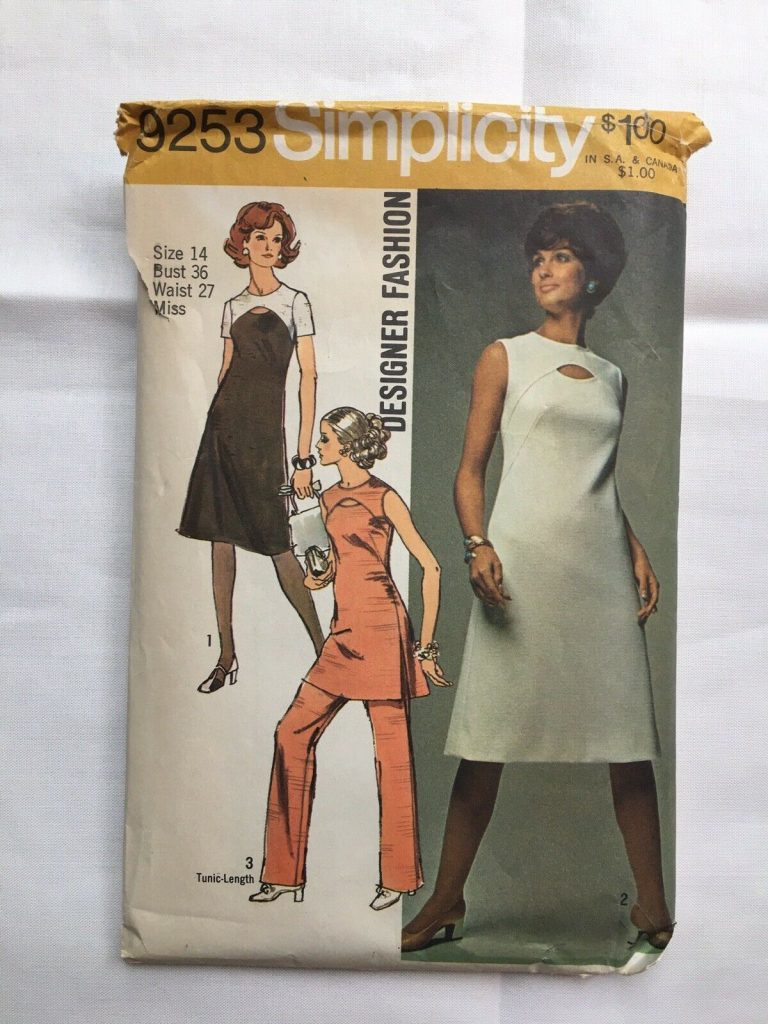

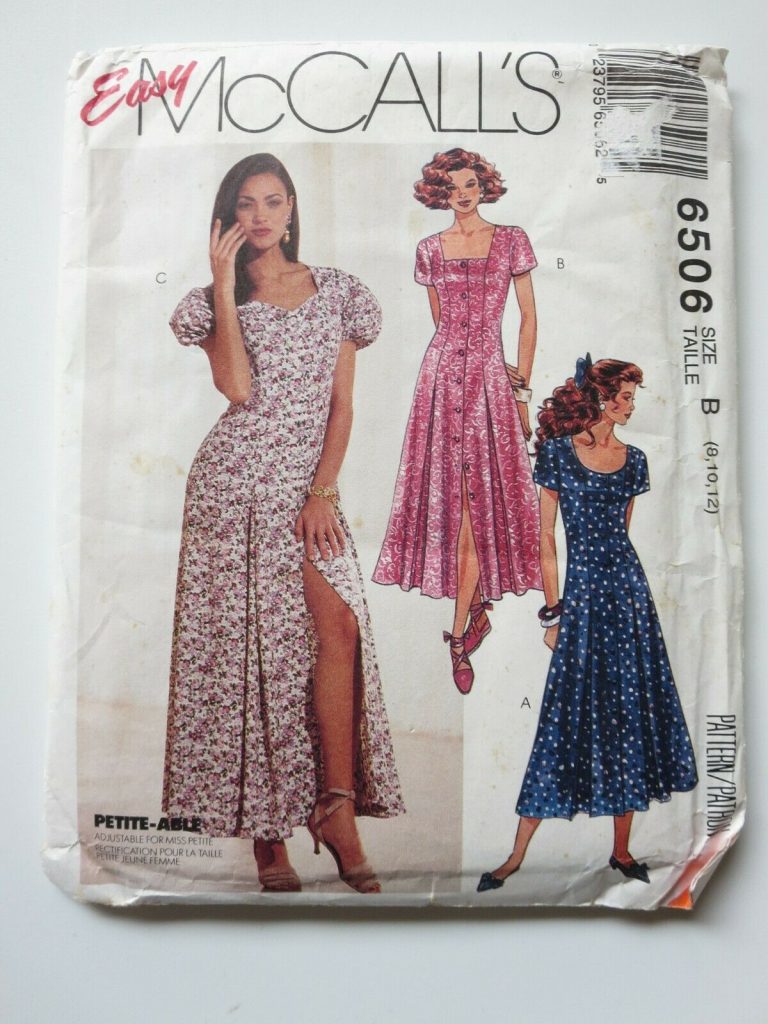



I have couple. Vintage pack Deighton’s ,simplicity, butterick &
Style about 14 packs.
To tell the truth, I’m engaged in craft, but I didn’t know that the patterns can show the age of a person and I couldn’t even think about it but now it seems absolutely unthinkable for my understanding. The history of paper sewing patterns is so incredible and it is so cool that you talked about it because it requires a lot of attention. I can’t imagine that paper sewing patterns have such a long, varied history and so many interesting facts. What is most interesting is how headily and in what measure the style has been evolving and how it has always been splendid. I think that vintage will always conquer people’s hearts and will always be absolutely fashionable, always looking advantageous.